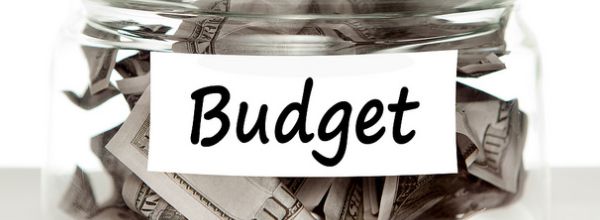In my last article, I talked about the basic protocols and experiments conducted in the process of converting algae into biofuel. Our ability to culture algae has efficiently improved over the years. Continuous improvisation in basic techniques has helped us to understand the growth limiting step of algae culture.
In this article, I will discuss some fundamental techniques to culture algae.
Different Types of Systems Available for Microalgae Culture
Open System
One of the most natural methods to culture algae is in a free environment (sunny areas are preferred) to get maximum production. Considering their low maintenance and construction costs, open ponds are the best options for conducting initial experiments on a large scale.
There are different parameters you need to consider carefully before building an open pond. Bad weather and constantly changing water temperatures can inhibit high production. For this reason, open pond systems are usually built where temperatures range higher than 15°C. Also, the entry of foreign organisms can compete with algae for common growth limiting substrates. Furthermore, evaporative losses, uneven light intensity, and diffusion of CO2 in the atmosphere are some major limitations of open ponds.
Enjoying this article? Get hard-won lab wisdom like this delivered to your inbox 3x a week.

Join over 65,000 fellow researchers saving time, reducing stress, and seeing their experiments succeed. Unsubscribe anytime.
Next issue goes out tomorrow; don’t miss it.
Open systems are categorized into natural (small ponds, lakes, lagoons) and artificial ponds (container, tanks). The most popular open pond system is the artificial raceway pond in which nutrients, algae, and water are regulated along a circular path. You can build a raceway pond simply by digging a recess into the ground, lining it with plastic to prevent the absorption of the nutrient solution into the earth, and adding a paddlewheel to circulate the water. Ponds vary in size from 0.5m2 to 100m2; a single paddlewheel provides sufficient mixing for a 5ha cultivation area.
What to Consider When Designing an Open System
There are many different factors to consider when designing an open system. The most important are:
- Mixing patterns: mixing plays an important role in the distribution of sunlight and other essential nutrients, but limited research has been conducted to study mixing characteristics and flow patterns. To begin, conduct experiments to optimize mixing characteristics based on continuous or semi-continuous mixing, speed, time duration, etc. Different experiments should be conducted to optimize these mixing characteristics.
- Mixing technology: mixing can be achieved using different technologies. For example, gas sparging and magnetic beads have been used in algae ponds. The type of technology you choose will depend on your requirements and scale.
- Depth of open ponds should be considered along with mixing characteristics such as circulation velocity to have uniform culture density. Try the above points in different depths of open ponds that range from 5-100 cm.
- Computational Fluid Dynamics/kinetic Studies: You should perform these studies to determine the physical, hydrological, geometrical, and dynamic variables that predict the behavior of the open pond system
- You should also keep in mind several other important parameters such as the extent of water evaporation rate, contaminations, and external influences.
All the abovementioned points vary according to experiment requirements, strain, environmental conditions, etc.
Closed System
A closed system, also called a photobioreactor (PBR), provides a controlled environment to culture algae. The closed system environment can be manipulated according to species requirements. Every parameter, including carbon dioxide level, water supply, temperature, light intensity, culture density, pH level, aeration rate, and mixing pattern can be controlled.

Since PBRs function in controlled circumstances, (e.g. uniform temperature and light intensity) higher and continuous productivity is achieved. However, the capital cost and technical aspects in sterilizing the system prevent the use of photobioreactors on a large scale.
Setting Up Your Own Photobioreactor
Since all experimental conditions are controlled by you, and photobioreactors can be purchased, setting up a closed system is easier than setting up an open system. To start your experiments, you should:
- Construct and test the photobioreactor under different mixing conditions.
- Analyze the algal biomass under monochromatic and bi-chromatic light conditions.
- Calculate the algal biomass and total lipid yield under various light colors and intensities.
- Test the effect of environmental factors, such as supplementary carbon and nitrogen sources, on the variation in total lipid content.
A DIY Photobioreactor
Commercial photobioreactors can be cost-prohibitive, especially for research teams that lack initial funding for the experiments.
But never fear! You can build your own photobioreactor using wastewater bottles. In this type of bioreactor, you use recycled water bottles that are compartmentalized and parallel to each other. The system takes the light energy from the sun and aeration is provided through external sources.
Factors to Consider When Building This System
Different conditions can be altered to optimize your system, including:
- Using different size bottles (height and width) in different racks.
- Covering the water bottles with different colored sheets (red, green, blue, yellow) that absorb different wavelengths of light.
- Varying the diffusion rate of carbon dioxide using a pump.
Currently, algae farms are unsustainable on a large scale due to many limiting factors such as high media cost, energy intensive and continous production. However, with increases in advancements in technology and culture techniques, extensive assessment is going on to increase the efficiency of the production sector.
The good news is that there is still a lot of room for improvisation in algae farming.
You made it to the end—nice work! If you’re the kind of scientist who likes figuring things out without wasting half a day on trial and error, you’ll love our newsletter. Get 3 quick reads a week, packed with hard-won lab wisdom. Join FREE here.








